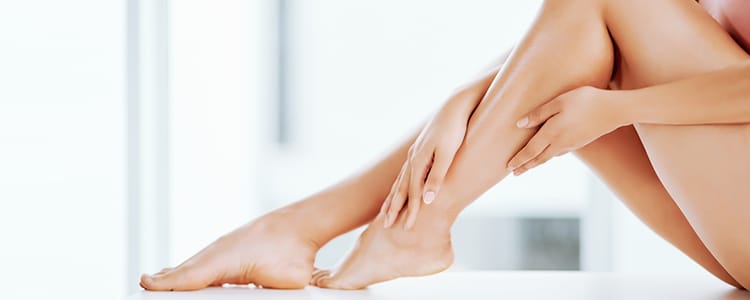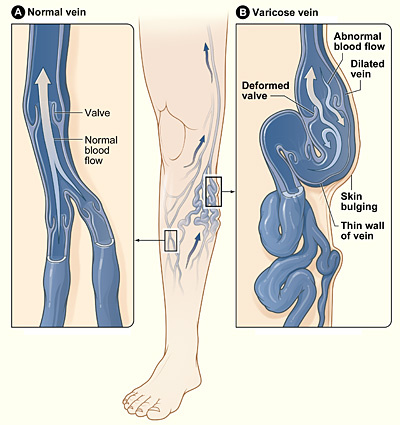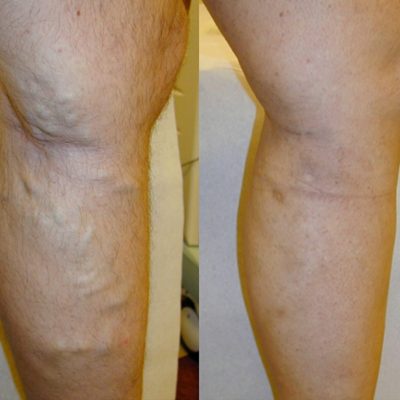Varicose veins are extremely common medical condition affecting up to 30% of the adult population and having a significant impact on an individual health and quality of life. Women are more likely than men suffer from abnormal leg veins. Present data shows that up to 55% American women may be affected in their lifetime. Millions of people seek medical attention annually for varicose veins because of their cosmetic appearance or associated symptoms.
Varicose veins are abnormal, dilated, elongated or bulging blood vessels caused by weakening in the vessel wall or valve. They typically appear as twisted clusters of blue or purple veins most often on the legs. Varicose veins are related to increased pressure or defective valves in the veins resulting in reverse blood flow (reflux) in one or more saphenous veins and their tributaries. The disease process can affect veins of any sizes. Tiny superficial blood vessels are known as spider veins or telangiectasias causing red, blue or purple skin discoloration and are most common on the thighs, calves and ankles. Most varicose veins develop near the surface of the skin and are visible to the naked eye while the deeper varicose veins cannot be seen but may cause the skin above them to become swollen, inflamed or discolored.
Diagnostic ultrasound is usually used to determine the cause and severity of the problem. Duplex ultrasound uses painless high frequency waves to measure blood flow through your vessels and see the structure of your veins. The test usually takes 20-30min for each leg and helps your physician decide whether your varicose veins need surgical intervention or conservative approach.




